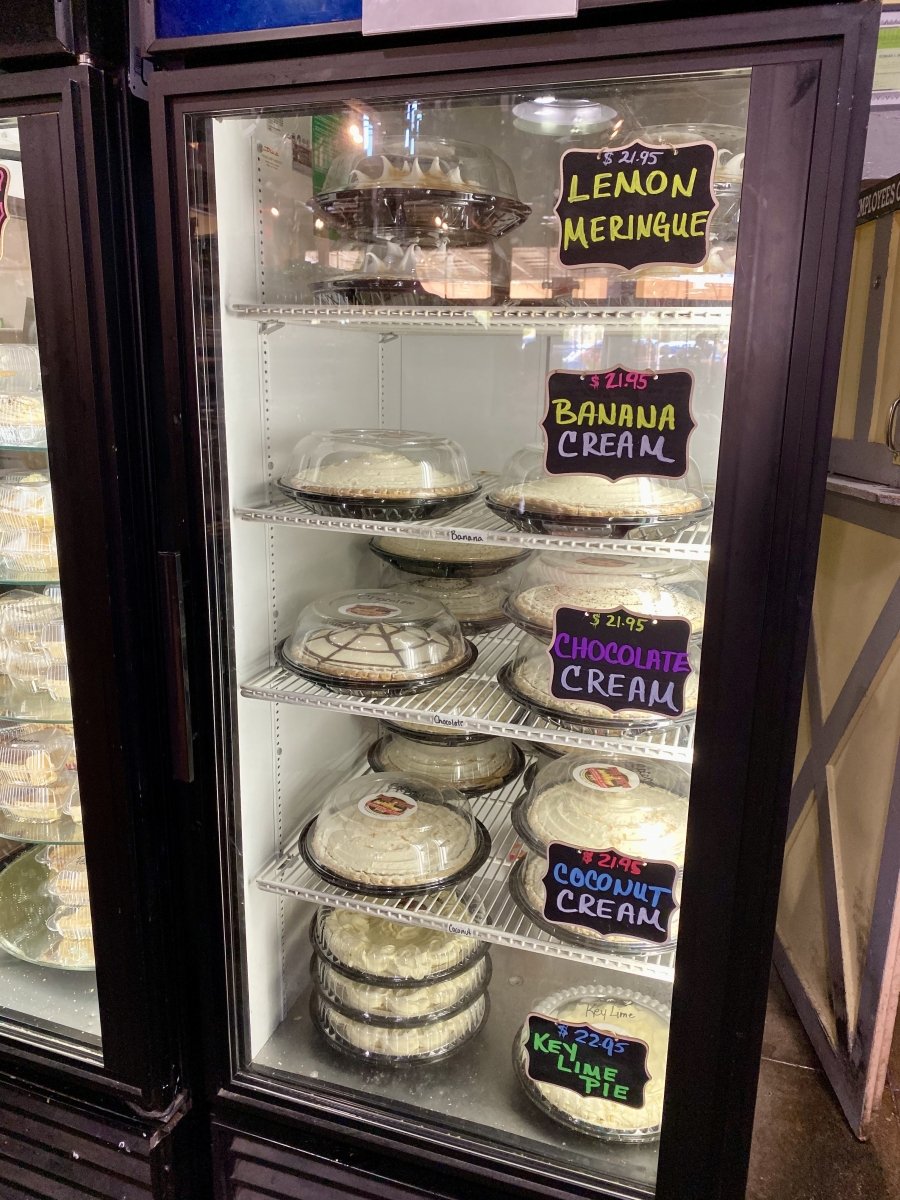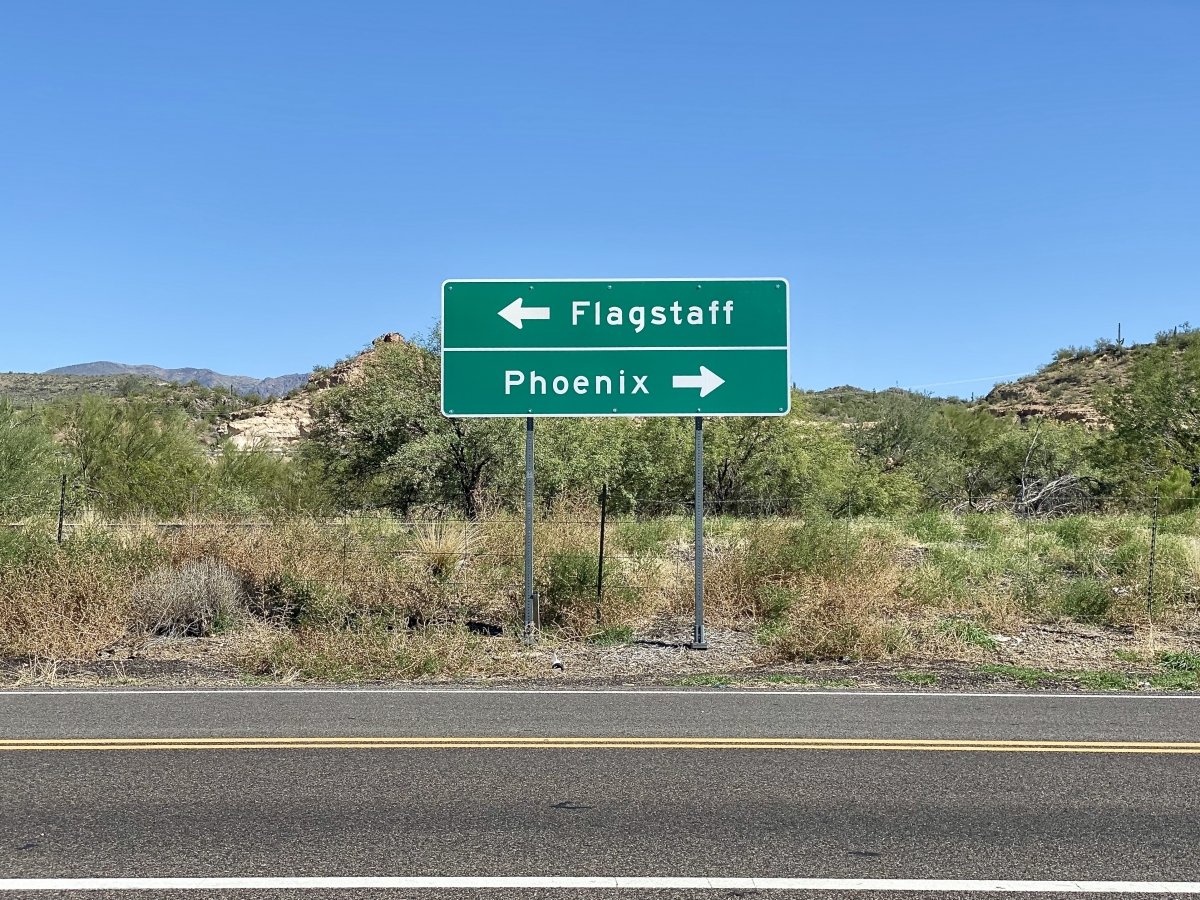
Attracting more than 5.5 million visitors per year, Grand Canyon National Park is Arizona’s most popular attraction. To reach the South Rim of the canyon, where 90% of those visitors go, you must travel through Flagstaff.
Travelers who fly into Phoenix and rent a car to drive to the Grand Canyon, will want to overnight in Flagstaff (or Williams), and head to the canyon the following day.
The 2.5-hour route from Phoenix to Flagstaff along I-17 allows plenty of time to stop at attractions along the way.
A legendary pie place, an experimental town, and a national monument with two distinct locations, will be some of your options for turning an interstate drive into an adventure.
And if you want to detour through scenic Sedona, that is an option, as well.
You will gain more than a mile in altitude on your drive between Phoenix (1,117 feet) and Flagstaff (7,000 feet), cruising through ever-changing desert ecosystems dominated by saguaro, juniper, and Ponderosa pine.
Find lodging options for Phoenix, Sedona, and Flagstaff on TripAdvisor!
Rock Springs Café
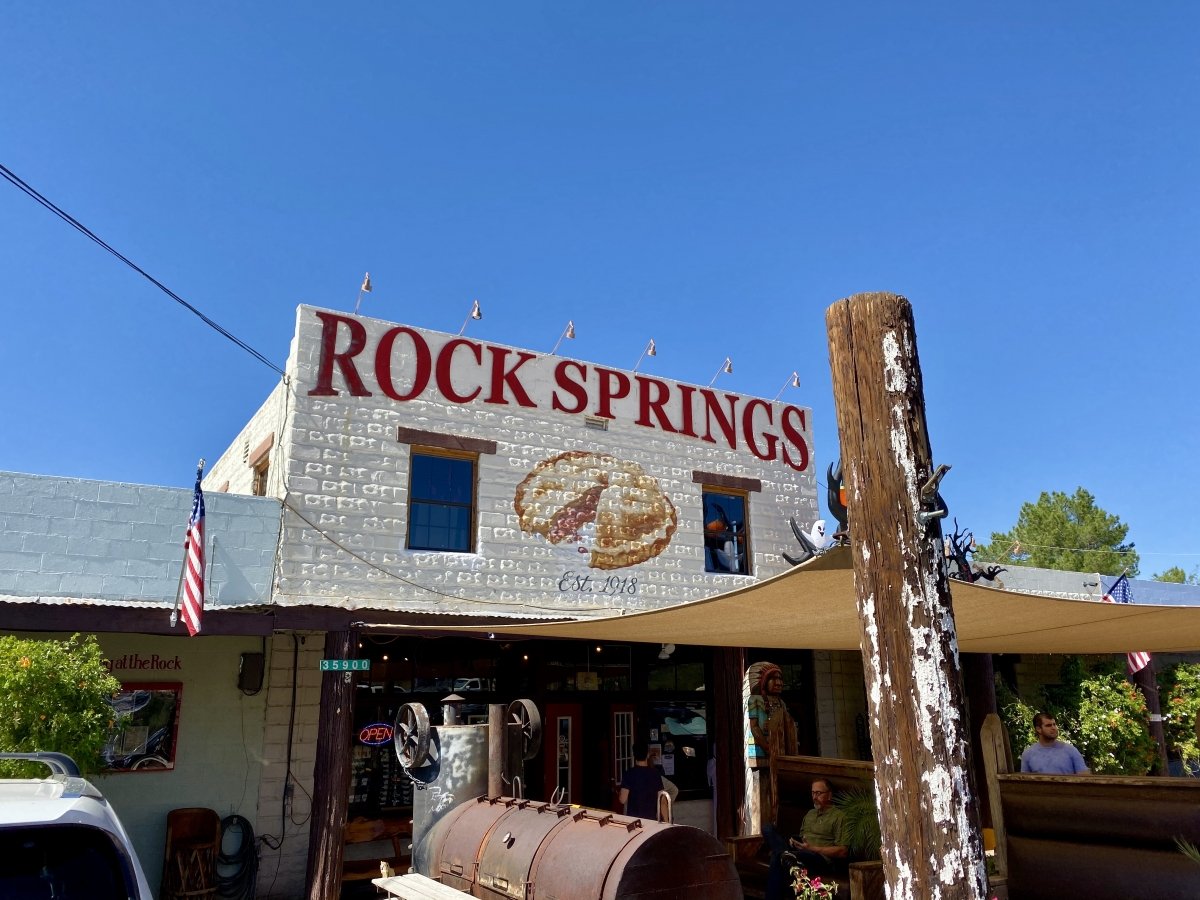
The pop-up gas station that would become Rock Springs Café was established in 1918 by 19-year old entrepreneur Ben Warner, at the site of a former watering hole for cattle drives and sheepherders.
By 1924, Warner’s venture had added a general store and hotel.
Today, this travelers stop for more than a century is best known for its delicious pies.
Rock Springs Café has become quite the tourist attraction in recent years. But between its rich history and more than thirty varieties of fruit, cream, specialty, and seasonal pies, that should come as no surprise.
There was a wait for a table when we stopped for lunch, so we opted for a seat at the bar, which we prefer anyway.
I enjoyed the Nacho-Nachos and a slice of bourbon pecan pie, and I left longing to sample all of the remaining pies on the menu.
The café serves breakfast, lunch, and dinner, so no matter what time of day you travel past exit 242, you can stop in for a hearty meal and slice of pie.
Arcosanti

The next thing to do on a drive from Phoenix to Flagstaff is to take exit 263 to visit the site of an experimental town called Arcosanti.
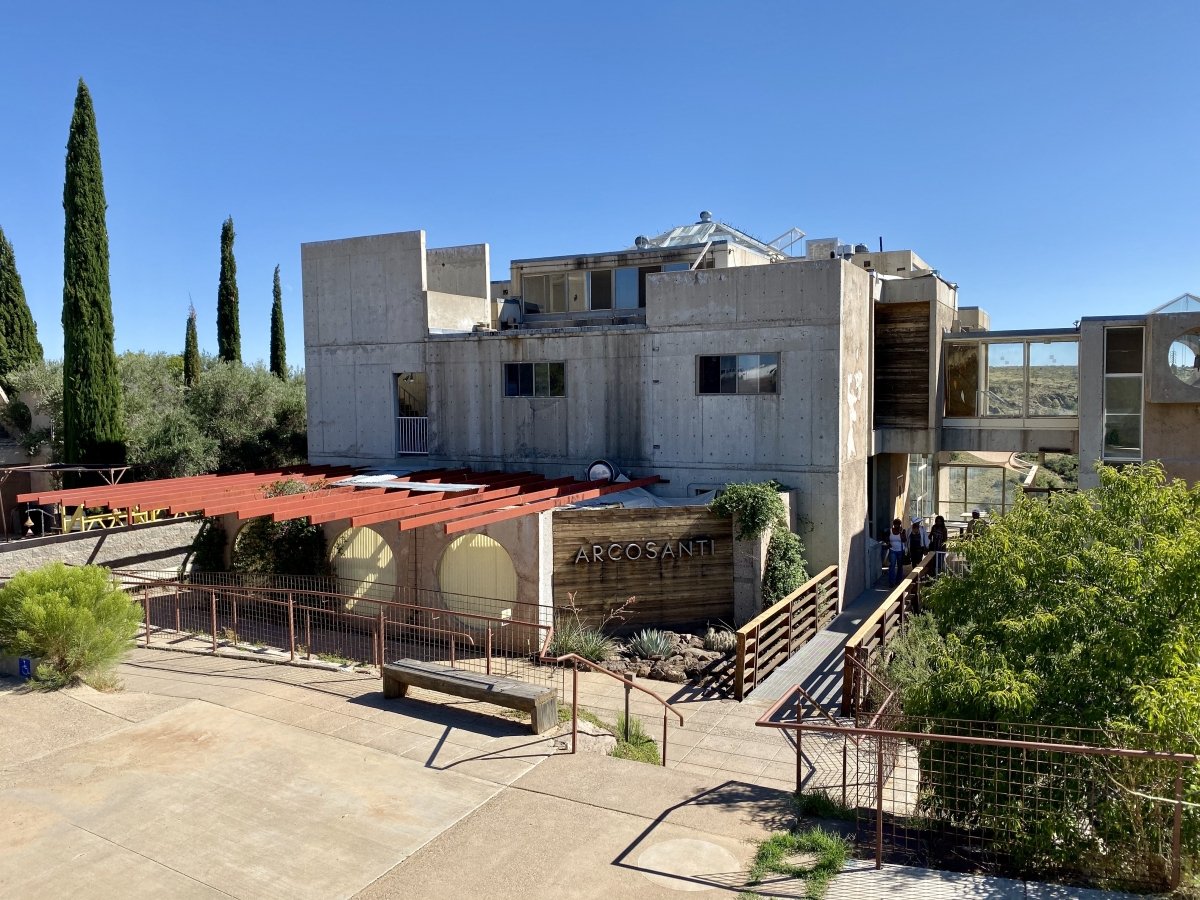
This urban laboratory was constructed in 1970 by Italian-American architect Paolo Soleri on the principles of arcology—a blending of “architecture” and “ecology”—to design sustainable cities.

Arcosanti continues today as a 24/7 living experiment, offering workshops, hosting events, and leading guided tours of the grounds. The site is open daily from 9:00 AM to 5:00 PM, except for major holidays and special events
The associated Cosanti windbell-making studios, located north of Scottsdale, is a major source of funding for the urban laboratory at Arcosanti.
Montezuma Castle National Monument
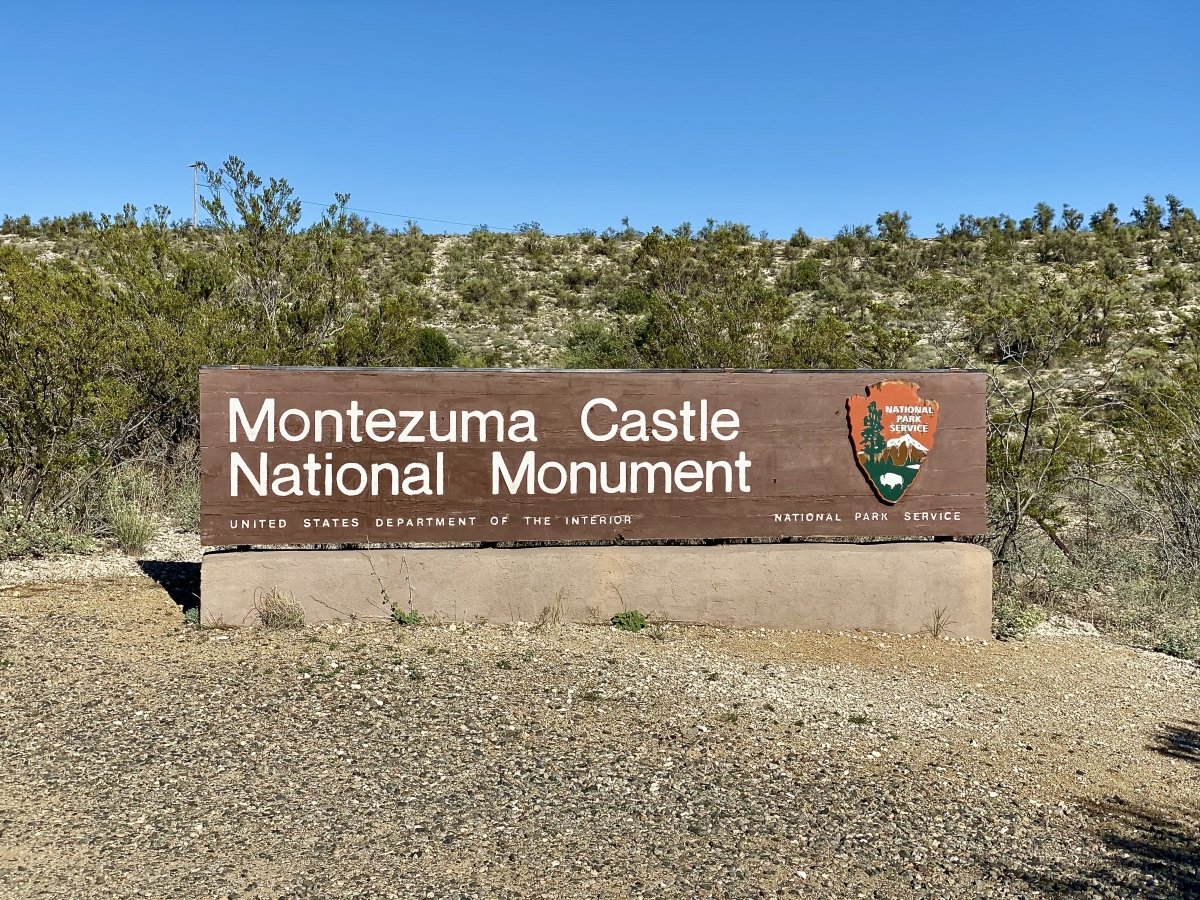
National Park Service sites are always on my radar, especially when they are two-for-one sites like Montezuma Castle National Monument.
Take exit 289 to journey into Arizona’s past beginning at the Montezuma Castle Visitor Center.
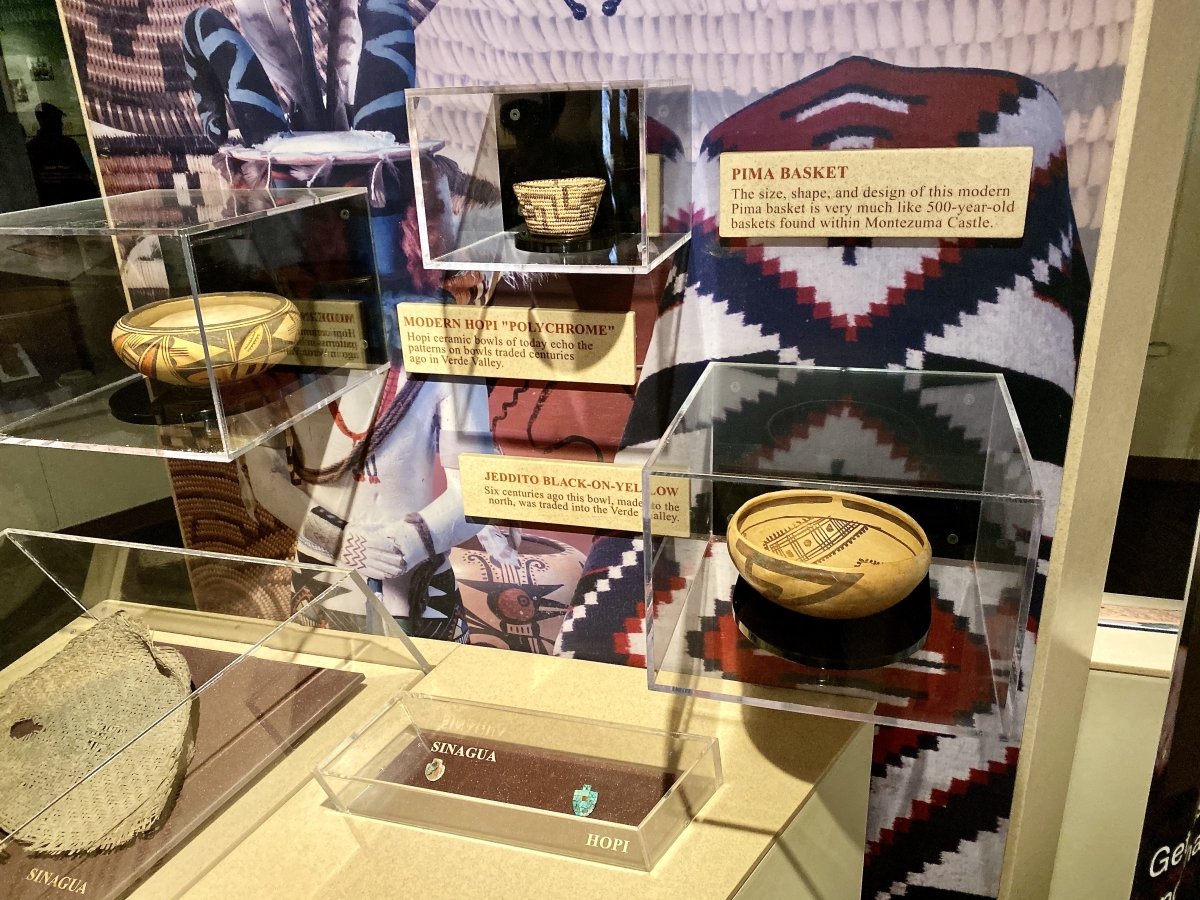
Because Montezuma Castle was the first of many NPS sites we would be visiting on our Arizona road trip, we decided to purchase an annual pass for $80. The pass covers everyone in your vehicle and is valid for access to all federal lands in the United States.
As a National Parks Passports fanatic, I made a point to collect our stamps and spent a few minutes touring the visitor center museum.
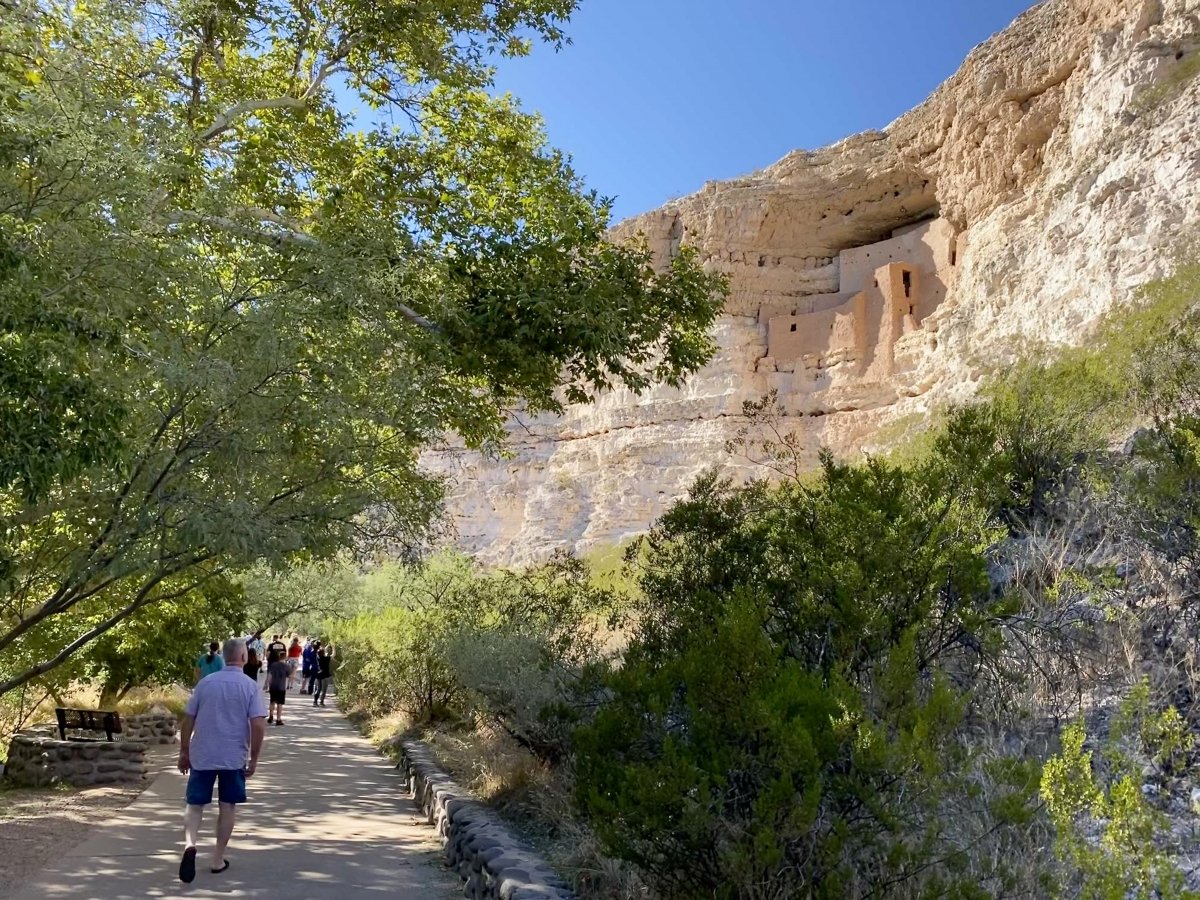
Exiting the rear door of the visitor center we were immediately confronted with a stunning view of the cliff dwellings at Montezuma Castle.
I was utterly awestruck by the ingenuity and craftsmanship of ancient Native Americans.

The archaeological site was constructed by the Sinagua people between 1100 and 1425 AD.
The name “Montezuma Castle” is misleading on two accounts. It is not associated with the Aztec emperor Montezuma, and it is not a castle. The misnomer is attributed to the misinformed assumptions of European Americans who first observed the site in the 1860s.

I was surprised to learn that prior to 1951, visitors to the monument were allowed access to the prehistoric “high-rise apartment complex” by scaling the limestone cliffs using a series of ladders.

It was determined that an adjacent 5-level pueblo, dubbed “Castle A” by archaeologists, collapsed as a result of fire.
The 45-room structure was larger than Montezuma Castle, and subsequent excavations yielded artifacts that gave insight into the daily life of the Sinagua people.
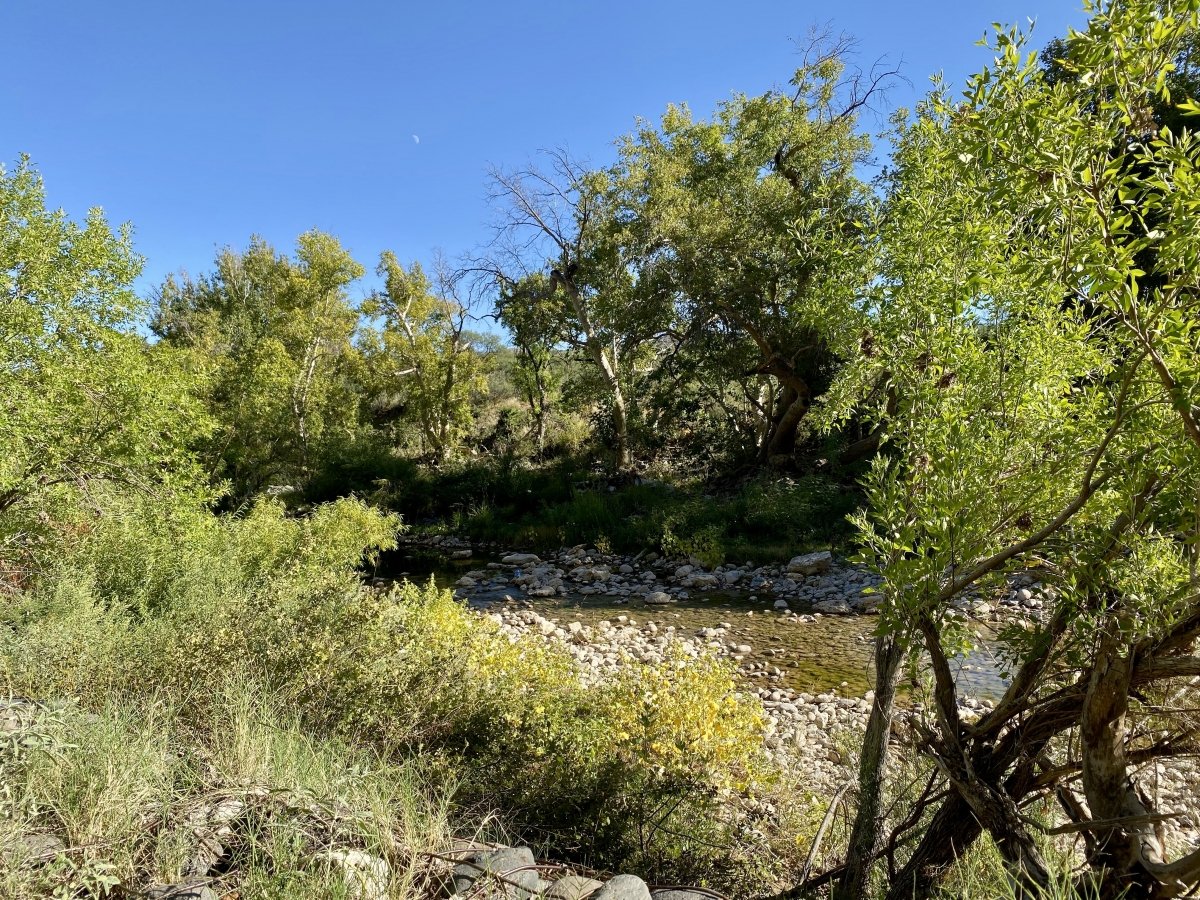
The settlement was selected, not just for its sheltered cliffside nook, but also due to its proximity to Beaver Creek. Sinagua farmers dug ditches to irrigate their crops, hunted animals drawn to the water source, and gathered creekside plants.


